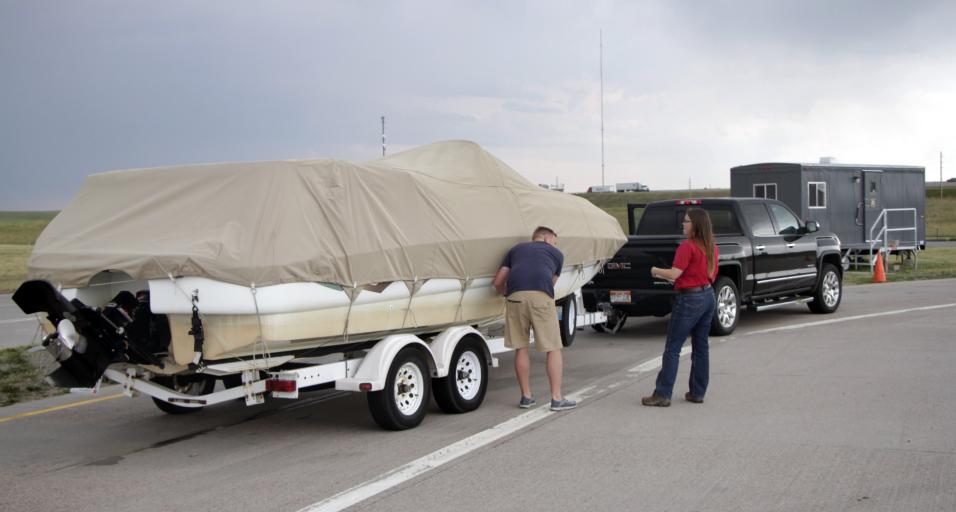Wyoming aquatic invasive species inspection stations are intercepting an increased number of boats harboring invasive aquatic animals and plants. Close to four months into the 2022 boating season, Wyoming Game and Fish Department has stopped 10 boats with mussels attached, one with a live brook stickleback mixed with live-caught bait and one with curly pondweed. The increased numbers indicate that AIS continues to threaten Wyoming waters, and boaters play a big role in keeping them out.
“The numbers we’re seeing are concerning — especially this early in the season,” said Josh Leonard, Game and Fish AIS coordinator. “We’re seeing incoming boats with AIS as well as local boaters potentially moving AIS between waters.”
Wyoming is one of the only states that has avoided an infestation of invasive mussels. Wyoming has previously documented curly pondweed, brook stickleback, as well as Asain clams, New Zealand mudsnails and rusty crayfish.
The defense against the destructive species starts with boaters stopping at watercraft inspection stations. There are 14 permanent Game and Fish-operated inspection locations at key places like state lines, ports of entry and high-use boat ramps — in addition to a number of certified private inspectors. This season Game and Fish has inspected over 17,000 watercraft, on pace with the previous two years.
“Inspection stations are certainly busy — which is good. That means a lot of boaters are recognizing inspections are key to keeping zebra and quagga mussels and other threats from spreading,” Leonard said. “The inspections take minimal time, but they can get busy — especially around a holiday weekend. If there is nothing of concern found — like mussels, snails, plants or standing water, you can be on your way quickly.”
If AIS is found on watercraft, Game and Fish will decontaminate the boat and teach people how to spot these threats themselves to make the next inspection seamless. That process is called Clean, Drain, Dry.
It’s state law that all boaters must stop when coming upon an AIS inspection station — even if they stopped at one prior. Any watercraft transported into Wyoming from March 1-Nov. 30 must undergo a mandatory inspection by an authorized inspector prior to launching on any Wyoming waterway. If boaters entering Wyoming do not encounter an open AIS check station on their route of travel, it is the boater’s responsibility to seek out an inspection. Further, if the watercraft was used on a water suspect or positive for invasive mussels in the last 30 days, it must be inspected prior to launching year-round and may require decontamination. Full rules are available online.
“Game and Fish is dedicated to keeping invasive species at bay. Boaters who stop at check stations and know and follow the regulations are a key partner in these efforts,” Leonard said.
Inspectors are finding more than AIS aboard. Leonard noted inspectors are intercepting illegally-possessed live baitfish, which are not allowed to be brought into Wyoming by an angler or possessed west of the Continental Divide.
WY AIS inspection stations finding more mussels, invasive animals on watercraft
Sara DiRienzo, Public Information Officer - (sara.dirienzo@wyo.gov)


